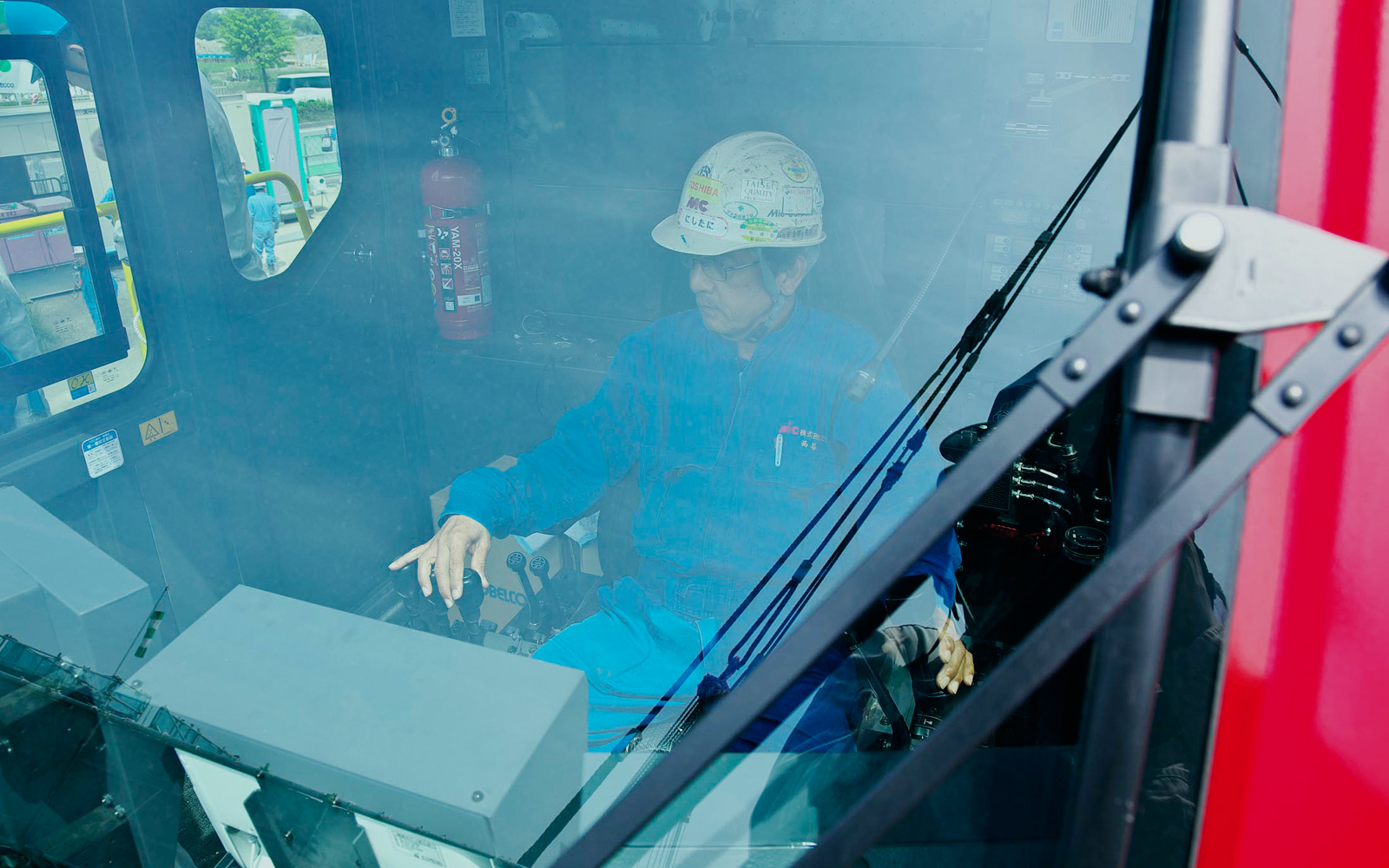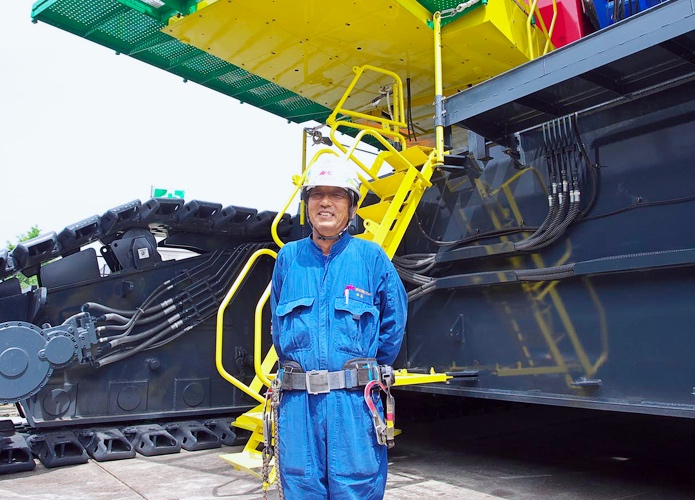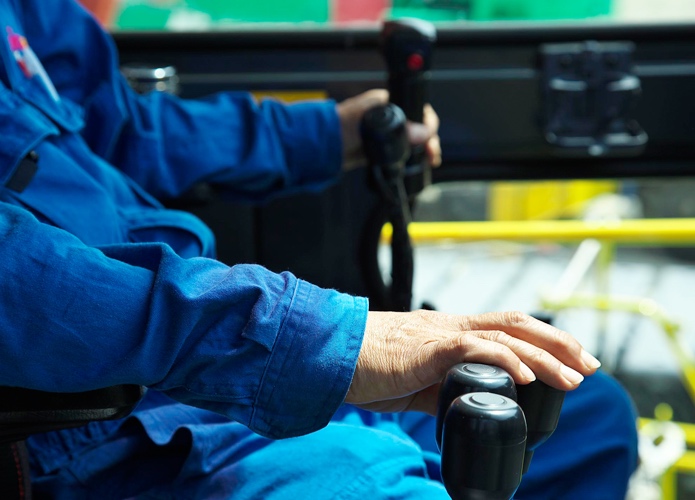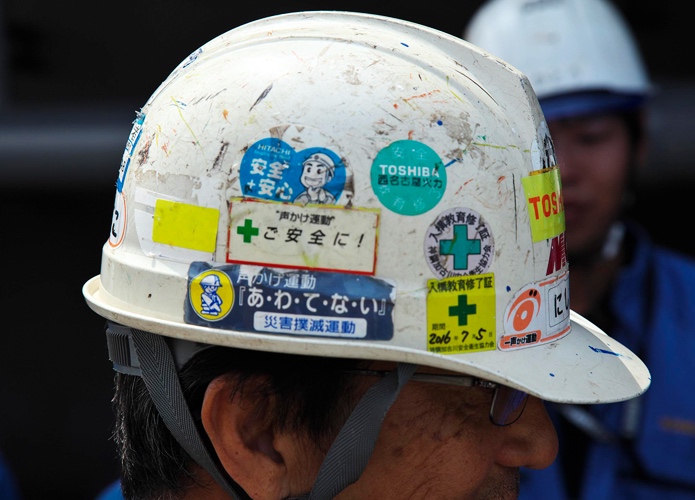
Date of visit
May 2016
Cranes and those operating them
MIC Co., Ltd. knows all about cranes.
Two senior executives and the operator of the SL16000J-H
share their thoughts and discuss policy.
 Mr. Koji Nishitani
Mr. Koji Nishitani
Crane operator
MIC Co., Ltd.
The requirements of a good crane operator
It was actually a special day for Kobelco. It saw the unveiling of the long-awaited SL16000J-H, one of the biggest crawler cranes in Japan. It went to work for the first time ever. The designers and others associated with the crane turned out for this occasion. There were quite a few keen crane buffs and others who had turned out in a private capacity. So who actually got to sit in the cab and operate the crane? It was a mild-looking gent. He turned up about 14 hours earlier.

Mr. Nishitani is a veteran operator with MIC of more than 30 years’ experience. He was picked as the first person to operate the SL16000J-H. When he first started on the job, he operated small 35-ton cranes. Often he was behind the controls of old cranes. Gradually over the course of his career, he got to operate bigger cranes like the Kobelco 650, 7650, and the 7800. We spoke to Mr. Nishitani before he put the SL16000J-H to work, and asked him what it’s like to handle . . .
“Big cranes, first of all, aren’t easy to operate, because they have to lift very heavyweights. I think Kobelco focused on that. It designed the SL16000J-H to make sure it was easy to operate. The winch hoists and lowers smoothly. And the dolly handles smoothly as well. I’ve been on a lot of Kobelco cranes, and this might be the smoothest one yet.”
We asked Mr. Nishitani about the things he pays special attention to and what he hopes to improve upon. The answer should tell us the requirements of a good operator, and might even reveal some inner secrets . . .
“I take due care with the levers and everything else. I don’t rely too much on the set limits. They’re important, of course, but I don’t rely on them totally. I always keep a check on what’s happening around me, because sometimes a vehicle might be coming up behind me, even though it might be a no-go zone.”

In short, it’s about exercising due care when operating a crane and paying attention to what is happening around it. That might be something of an anticlimax . . . one of the most basic fundamentals. But Mr. Mitsuhashi and Mr. Iguchi appeared pleased with that statement. That’s what it’s all about.
Mr. Nishitani’s helmet is covered in more stickers than others. Two in particular stand out on the right-side. One says, “Be safe!” and the one below it says, “KEEP CALM”. The entrance to the cab is also located on the right-side. Once Mr. Nishitani gets in the cab and sets off to work, he’s telling us, it seems, “I’m paying attention. You pay attention too.” We might be reading too much into this, but from his attitude, his actions, and his gentle smile, it’s certainly apparent that Mr. Nishitani exercises self-discipline and watches out for his colleagues at the worksite.
